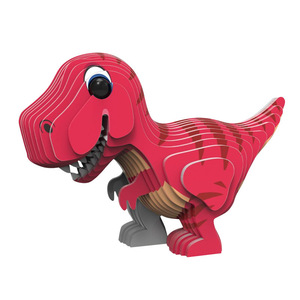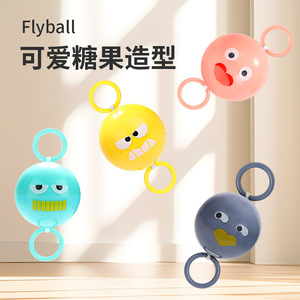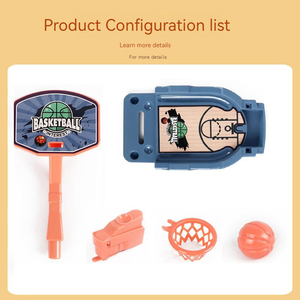(67 products available)








































































































































































































Puzz toys are a great way for kids to learn and have fun at the same time. There are many different kinds of them, each with its unique way of helping kids think and solve problems. Here are some common types of puz toys for kids:
Jigsaw puzzles
Jigsaw puzzles for kids are a classic activity. They come in many shapes and sizes, with pictures of animals, places, or scenes from nature. As kids put together the pieces, they learn to be careful and look closely at things. This helps them grow their hand skills and makes them happier when they find where a piece goes.
3D puzzles
3D puzzles are cool because they make shapes that pop up out of the flat surface. They can look like buildings, dinosaurs, or even famous places like the Eiffel Tower. These kinds of puzzles help kids understand how things fit together in three dimensions, which is good for their thinking skills. Playing with 3D puzzles also helps kids use their hands better and be more precise in their movements.
Magnetic puzzles
Magnetic puzzles are exciting because the pieces stick together using magnets. This makes it easy for kids to put the puzzle together, even if they are just starting. These puzzles help kids learn about shapes and colors and how to make different patterns.
Puzzle cubes
Cube puzzles are like puzzles inside a cube shape. The most famous one is the Rubik's cube. There are many other types too. These puzzles challenge kids to twist and turn the cube until all the sides are the same color. Solving these puzzles helps kids think quickly and make decisions. It also helps them be patient and not give up when things get tricky.
Seek and find puzzles
Seek and find puzzles are fun games where kids have to find certain objects in a big picture or a list of words. Word searches and Where's Waldo are great examples of seek and find puzzles. These games help kids improve their eyesight and pay attention to small details. They also make kids better at spelling and knowing different words.
Before buying any puzzle toy for resale, buyers should consider the material, age group, and difficulty level.
A puzzle toy's material affects its durability and safety. Toys for younger children should be made of soft and non-toxic materials. Avoid toys with hard materials, small parts, or pieces that can easily break because they are dangerous for younger children. On the other hand, puzzle toys for older kids should be made of hard and durable materials like metal and wood.
Like most toys, puzzle toys come in different age groups. Toys for kids below three years have soft materials and designs that are easy to handle. They are also large and do not have any small parts that can cause choking. Toys for children above three years are more complex and challenging.
Challenge is one of the most important factors to consider when choosing puzzle toys. Simple puzzles are great for younger kids because they are still developing their problem-solving skills and need to build their confidence. On the other hand, complex puzzles are ideal for older kids or those with more puzzling experience since they will challenge their critical thinking and spatial awareness and improve their problem-solving skills.
Puzzle toys are designed with various safety features to ensure they are safe for users, including children and adults. Here are some common safety features found in puzzle toys:
Non-toxic materials
Safe puzzle toys are made from non-toxic materials like BPA-free plastics, natural wood, or non-toxic paints. This ensures they are safe if one chews or puts them in the mouth.
Rounded edges
Rounded or smooth edges prevent cuts and injuries. This feature is especially crucial for toys intended for younger children.
Size considerations
Large pieces that are impossible to swallow reduce choking hazards. Additionally, toys for different age groups are made to ensure they can handle more complex puzzles and larger pieces.
Secure fastenings
Secure fastenings ensure that small parts or batteries are firmly in place and can't be easily removed, reducing the risk of choking hazards and accidental ingestion.
Sturdy construction
Durable materials that are hard to break increase longevity and safety. This ensures the toys can withstand regular use without splintering, breaking, or producing sharp edges.
Puzzle toys vary in quality depending on several factors. These factors include the material, manufacturing process, design, and intended use. Here are some features of quality puzzle toys:
Durability
Quality puzzle toys are made from sturdy materials like wood, metal, or high-grade plastic. They are designed to endure regular use and are unlikely to break or splinter.
Safety
These toys are made from non-toxic, child-safe materials. Additionally, they undergo safety testing to meet international safety standards. This certification ensures they are free of harmful chemicals and safe for children to use.
Educational Value
Good puzzle toys encourage cognitive development by improving problem-solving skills, logical thinking, and spatial awareness. They also allow kids to learn concepts like colors, shapes, numbers, or letters in a more engaging way.
Versatility
High-quality puzzle toys are adaptable and can be used in multiple ways. This allows them to be rearranged or expanded, providing a more extended period of interest and play opportunities.
Ease of Use
These puzzle toys are designed to be simple to assemble and disassemble. This feature helps prevent frustration in the users and enhances the overall play experience.
Q1. What are the benefits of puzzle toys?
A1. Puzzle toys stimulate children mentally and improve their cognitive skills. They challenge the child according to their age and ability, enhancing problem-solving skills, logical thinking, and spatial awareness. Children also learn to be patient and persistent when working towards a goal, which builds character.
Q2. Which puzzle toy is suitable for a 3-year-old?
A2. 3-year-olds can use jigsaw puzzles with simple pictures, shapes, or animals, as the pieces are large and easy to handle. They can also use stacking and nesting puzzles, where they must stack objects in order or fit them into a space. 3-year-olds can also use pop-it fidget toys.
Q3. What are the signs of a good puzzle toy?
A3. Good puzzle toys have the right size pieces for the child's age, colorful, attractive, and made from durable material that can withstand rough play. They come in many difficulty levels to challenge the child and keep them entertained while helping them learn and develop new skills.